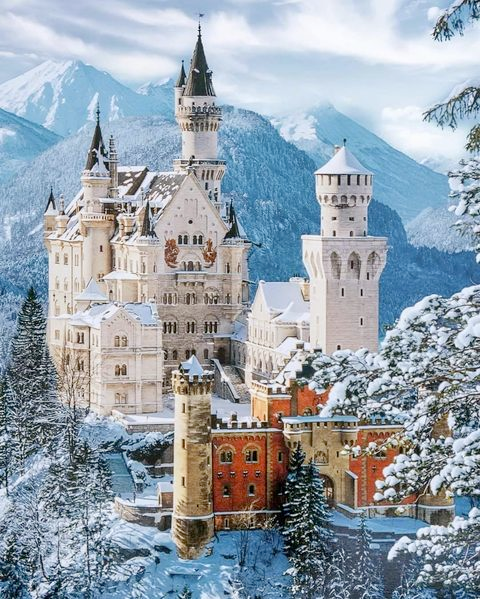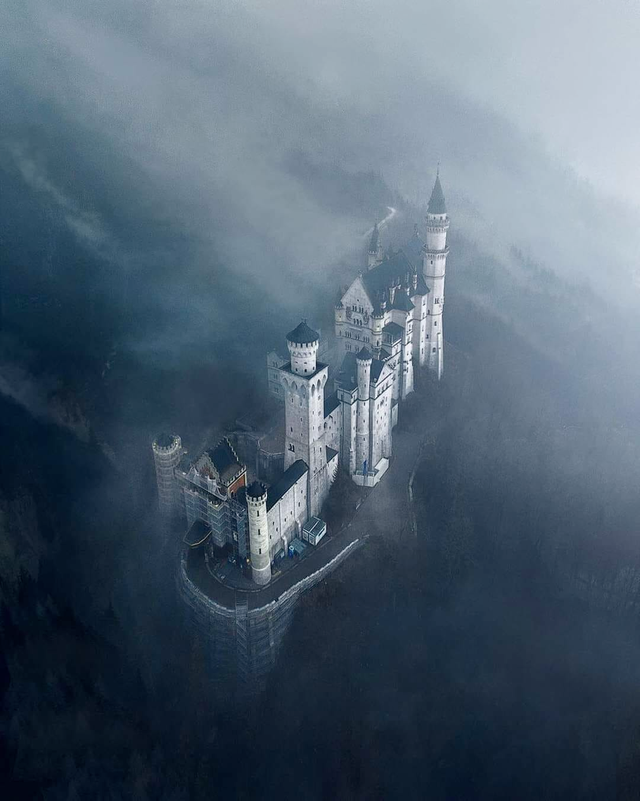Southwest Germany
Neuschwanstein Castle The southern Bavarian Schloss Neuschwanstein is a 19th-century historic building near Fassern, Fesser, southwestern Germany. The palace was built by King Ludwig II of Bavaria in honor of Richard Wagner. Badrian decided to pay for the castle with his personal wealth and extensive borrowing instead of public funds. Construction began in 1869 but was never fully completed.
Neuschwanstein Castle
General Information Architectural Style Romanesque Revival Hohenschwangau, Germany Construction began on September 5, 1869. 1886 (Open) Owner Bavarian Palace Department of Planning and Construction Architect Eduard Riedel Civil Engineer Eduard Riedel, Georg von Dolmann, Julius Hoffmann, Other Planners King Ludwig II, Christian Jank
The fort served as the King's private residence until his death in 1886. It was opened to the public shortly after his death. Since then, more than 61 million people have visited Neuschwanstein Castle. More than 1.3 million people visit annually, and about 6,000 a day in the summer.
location
A northerly view of Neuschwanstein Castle can be seen from Mount Solling (2,047 m or 6,716 ft) on the border between Bavaria and Tyrol.. The large Forgensee Reservoir (1952) between Schwangaubert and the Hohenschwangau and Neuschwanstein Castles.
The municipality of Schwangau is located at an altitude of 800 meters (2,620 ft) on the southwestern border of the German state of Bavaria. Its surroundings are characterized by a contrast between the Alpine foothills in the south (towards the nearby Austrian border) and a mountainous area in the north.
In the Middle Ages, three fortresses overlooked the village. One was called Schwanstein Castle. Completed in 1837, the palace became his family's summer residence and his eldest son Ludwig (born 1845) spent most of his childhood here.
Werderhohenswangu Castle and Hinterhohenswangu Castle sat on a rugged hill overlooking Schwanstein Castle and two nearby lakes (Alpsee and Schwansee) and the village. Separated only by a moat, they combined a hall, a bridge and a bastioned tower. In the 19th century only the ruins of the twin medieval castles remained, but there was an outpost known as the Silpantherm in Hinterhohenswangau.
The ruins above the family palace were known from the Crown Prince's excursions. He first recorded one of them in his diary in 1859. When the young king came to power in 1864, the construction of a new palace to replace the two ruined palaces became the first in his series of palace-building projects. Ludwig called the new palace Neuhohenswang Castle. Only after his death was it renamed Neuschwanstein. The confusing result is that the names Hohenschwangau and Schwanstein are effectively switched names. Neuschwanstein Castle replaced the ruins of Schwenstein Castle and Hohenschwangau Castle and the ruins of the two Hohenschwangau Castles.
Inspiration and planning
In the 19th century, many palaces were built or renovated, often with significant changes to make them more beautiful. Palace-building projects similar to Neuschwanstein had previously been undertaken in several German states, including numerous buildings on the Rhine such as Hohenschwangau Castle, Liechtenstein Castle, Hohenzollern Castle, and Steinson Fells Castle. The Neuschwanstein was inspired by two visits Ludwig made in 1867—one in May to the restored Wartburgnier Eysenac, and in July to Chouteau de Pierrefonds, which was being transformed into the ruins of Eugène Viollet-le-Duc. The fort is a historical palace.
Among the photos...

Neuschwanstein Project Drawing (Christian Janck 1869)
King saw both buildings as representatives of a romantic interpretation of the Middle Ages, as well as musical legends of his friend Wagner, whose operas Tannhäuser and Lohengrin had a lasting influence on him.
In February 1868, Ludwig's grandfather, King Ludwig I, died, freeing up a considerable amount of money that had been spent on the previously abandoned royal armoury. This allowed Ludwig II to begin the architectural project of building a private refuge on familiar grounds. In order to realize his idea of the Middle Ages, he built far away from the capital city of Munich.

#krsuccess #survived #srilanka #hamas #neuschwanstein #castle
Upvoted! Thank you for supporting witness @jswit.
Downvoting a post can decrease pending rewards and make it less visible. Common reasons:
Submit
Downvoting a post can decrease pending rewards and make it less visible. Common reasons:
Submit